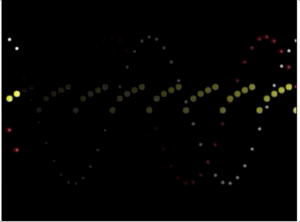As an educator, I focus on equipping students with a deep understanding of modern web development tools, frameworks, and methodologies. The courses I teach blend hands-on experience with foundational concepts, ensuring students are prepared to excel in the ever-evolving tech landscape. Here’s a breakdown of the key topics covered:
Modern JavaScript Ecosystem
- Babel & Webpack: Introduction to Babel for transpiling modern JavaScript and Webpack for bundling and optimizing assets.
- Node.js: Building server-side applications, initializing projects, and managing dependencies using
npmandpackage.json. - ES6+ Features: Deep dive into arrow functions, modules, destructuring, and the nuances of
NaN,undefined, truthy, and falsy values.
TypeScript: Enhancing JavaScript
- Introduction to TypeScript: Benefits of strong typing and the relationship between JavaScript and TypeScript.
- Typing & Interfaces: Explicit typing for variables, functions, and parameters; leveraging interfaces and enums.
- TypeScript in Practice: Building maintainable, error-free applications.
React: Building User Interfaces
- Core Concepts: JSX, component-based architecture, and state management.
- React Hooks: Practical use cases for hooks like
useStateanduseEffect. - Development Tools: Exploring Vite for fast project scaffolding and development.
Advanced Front-End Concepts
- CSS Media Queries: Responsive design techniques.
- HTML with JavaScript: Dynamic content creation using
.map()and.join(). - Canvas API: Drawing state properties, creating paths, and transformations.
- Web Audio Basics: Routing graphs, analyser nodes, and gain adjustments for audio-driven applications.
Data Handling & APIs
- Fetch API: Understanding promises, asynchronous operations, and the benefits of
asyncandawait. - Firebase: Working with Realtime Database for structured data storage, updates, and synchronization.
- GeoJSON & Mapbox: Visualizing geospatial data and building interactive maps.
Unix & Tooling
- Command Line Essentials: Navigating and manipulating the file system with Unix commands.
- Linting & Best Practices: Ensuring clean and maintainable code.
Practical Development Skills
- Variable Scope: Understanding reference vs. value types.
- Higher-Order & Pure Functions: Writing reusable and testable code.
- JSON & XHR: Parsing, well-formed JSON, and XMLHttpRequest objects.
What Sets This Classes Apart
Interdisciplinary Integration: Lessons include applications in creative fields like audio processing and data visualization.
Project-Based Learning: Students create real-world applications to apply concepts in meaningful ways.
Focus on Modern Tools: Exposure to industry-standard tools like Webpack, Firebase, Mapbox, and React ensures they’re job-ready.
